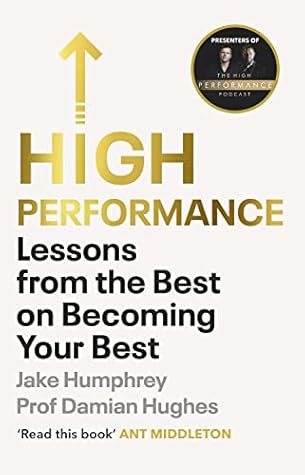More on this book
Community
Kindle Notes & Highlights
Read between
March 12 - April 9, 2022
even when things happen to us that aren’t our fault, there is one thing we can control: our reactions. This is what he meant by ‘responsibility’ – taking control of your reaction to the things life throws at you. As we’ll learn in this chapter, the ability to distinguish between ‘fault’ and ‘responsibility’ is one of the key skills – perhaps the key skill – in a high performer’s mental toolkit.
When we go through hell, it’s human to look for someone to blame. But blame is useless. All that matters is how we respond.
We are surrounded by things that we can’t always control: our jobs, our relationships, our families; illnesses, recessions, global pandemics. But if you want to be a high performer, you must realise that how you react to setbacks is down to you alone.
HIGH PERFORMANCE PIT STOP – THE ZANDER LETTER The Zander letter can help you, too. Write yourself a letter dated twelve months from now. This letter should begin with ‘Dear [Your name here]’, and should detail how, precisely, you achieved a goal that you currently have. This visualisation of your success should not include any future tense. Phrases like ‘I hope’, ‘I plan to’ or ‘I will’ are not allowed. Instead, write the letter as if those accomplishments are all history, and that you’re looking back at them from a distance. Be as detailed as possible, and identify the practical steps you
...more
one they called ‘self-determination theory’.10 Their theory states that when motivation is driven by internal, ‘self-determined’ forces – like personal growth and self-development – it is associated with higher levels of self-esteem and lower levels of depression and anxiety. On the other hand, when it is driven by external goodies – wealth and fame, for example – it is associated with lower self-esteem, and higher levels of depression and anxiety.
In their book Developing Mental Toughness, the sports psychologists Graham Jones and Adrian Moorhouse identify a variety of categories of motivation, ranging from fully internal to fully external.12 Read through the following descriptions and reflect on where your own motivation generally lies – when you’re at work, when you’re at home, when you’re practising a hobby.
While material rewards and social status can drive motivation in the short term, they’re rarely enough in the long run. True motivation comes from within. Internal motivation comes from three sources. First, ‘autonomy’. When your behaviour aligns with your values, it’s easier to get excited about it. Second, ‘competence’. We are most motivated when we have control over what we’re doing. Third, ‘belonging’. When we feel part of something bigger than ourselves – like a team – we can sustain our motivation for longer. The value of internal drive goes far beyond motivation, however. It’s good for
...more
The second step in controlling your emotions is learning to spot when your red brain has become too dominant. There’s an easy method of doing this. Ask yourself, ‘If I were looking at this situation from the outside, would I think that reaction is helpful?’
Remember the theory of multiple intelligence: there are myriad ways to be talented. The trick is to find yours. That involves three steps. First, recognition – think about those instances, perhaps in your youth, when you were told you had a talent. Was it a ‘golden seed moment’? Second, reflection – think about what you’re good at in the here and now. Success leaves clues. It’s your job to spot them. Third, rhythm – seek out those tasks that induce a sense of ‘flow’. These moments are all too rare, but might just reveal your true calling.
It was a powerful lesson on the power of consistency. It’s consistency that turns one-time high performers into all-time high performers. It’s consistency that turns a group of skilled but undisciplined sportspeople into a world cup-winning team. And it’s consistency that lets you excel for a lifetime, not just a moment. If you want to master high performance, consistency is everything.


